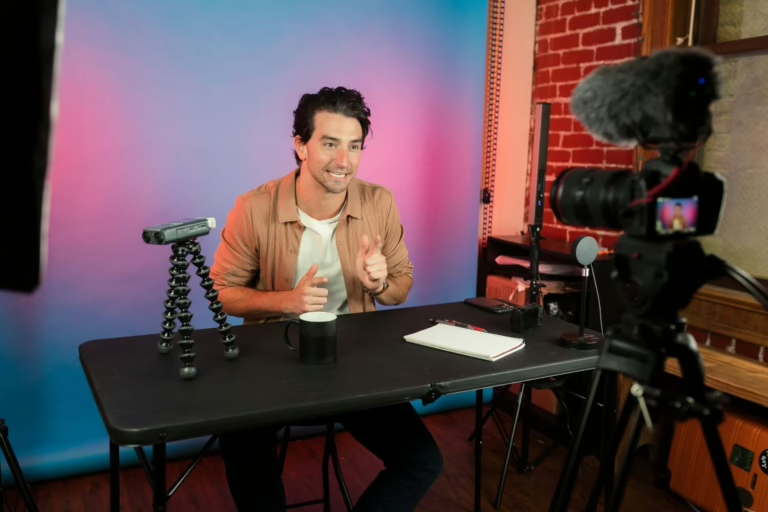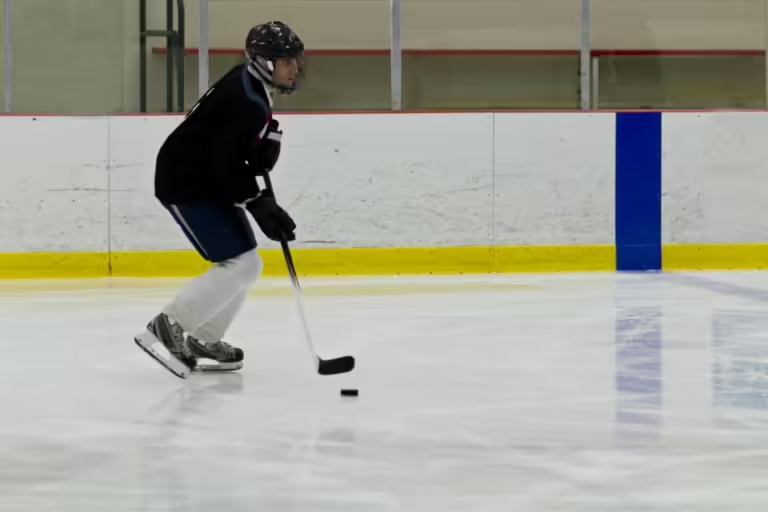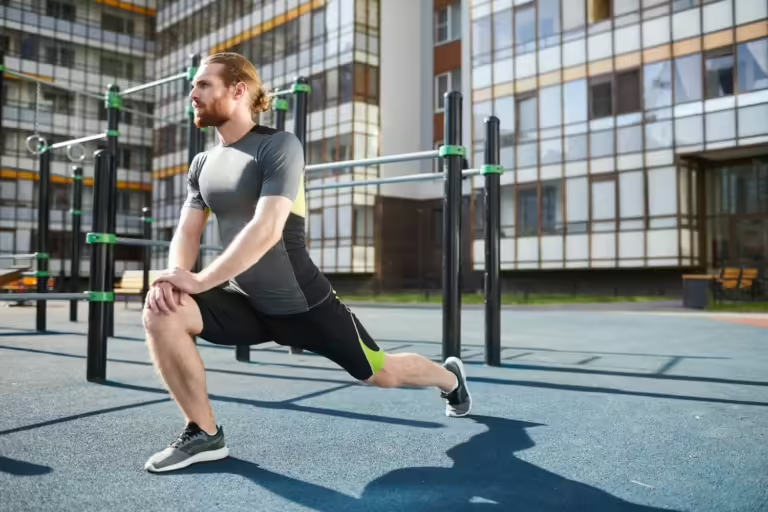Becoming a more explosive skater takes a lot of training. You must master the optimal skating stride technique. You must do hockey HIIT training a few times per week. You must develop a strong lower body and core.
But even with all of that, you need to actually train for power and explosiveness, which is different from strength and endurance.
Here are six plyometric exercises that done in conjunction with the proper on-ice hockey training and off-ice hockey training can help you become a much more explosive skater on the ice.
What Are Plyometrics?
Plyometrics is a training method involving jumps and quick movements to train the body to absorb and transfer maximum force in split seconds. It trains your muscles to use both speed and force to generate powerful quick movements, which directly transfers to athletic performance.
Depth Drops & Depth Jumps
One of the best introductory plyometric exercises is the depth drop, which you can eventually progress to the depth jump.
Depth Drop
The depth drop perfectly primes the body on how to efficiently and safely absorb force from the ground. Don’t be fooled – it looks incredibly simple but it’s more taxing on the body that you’d think.
Because of that, you should start small with everything – keep the box at knee height or below, keep the reps low between 3-5 and keep the sets low between 2-3.
Depth Jump
The depth jump is simply the depth drop with a jump added at the end. With the added jump, you can do many different variants and train slightly different aspects of power generation:
- Jump up as high as possible
- Jump out as far as possible
- Jump up as quick as possible
- Jump out as quick as possible
- Jump up on two legs and land on one
- Jump up and land 90 degrees rotated
Single Leg Mini Hurdle Hops
Another simple yet taxing plyometric exercise is the mini hurdle hop. It’s more difficult from a technical perspective than a depth jump only because you must take off and land on one leg.
From a hockey training perspective, single leg plyometric exercises are the most relevant to improving hockey performance because hockey is played on one leg at a time and single leg plyometric exercises mimic that sort of movement and power generation.
There are two main variations of the hurdle hop:
Hurdle Hop With Pause
Continuous Hurdle Hop
Lateral Single Leg Bounds
Lateral Single Leg Jumps are one of the more hockey-relevant plyometric exercises because it focuses on lateral power generation similar to a skating stride.
Similar to the mini hurdle hops, lateral single leg jumps are a rather technical movement that may take some time to master the landing, which is important that you stick as opposed to wobble.
Single Leg Seated Jump Squats
One of the biggest downsides to plyometric exercises in general are their safety – there’s typically a lot of stress put on the ankles and knees which increases injury risk.
That’s not the case with Single Leg Seated Jumps Squats. This is another joint-safe, lower-impact plyometric drill that can really help develop lower body power.
By starting in a seated position, you can get in a lower squat naturally without straining the lower back. It also allows you to train single-leg power generation while in a deep squat which directly translates to skating stride power.
Sprinter Step Up
The sprinter step up is very similar to the single leg seated jump squat but you start in a standing position and your center of balance is to your side instead of in front of you. This helps train more lateral power generation and closely mimics a skating stride.
The key to safety and success with this exercise is to control yourself on the way down. You want to land first on the jumping leg and then bring yourself down in a controlled manner until your other foot touches the floor. If you’re landing hard on your ground foot, you’re doing this wrong and could injure yourself. Controlling the downward force is a big part of why plyometric training is so beneficial, so don’t skip it!
Lunge Jumps
The final plyometric exercise we recommend for explosive skating is the lunge jump. One of the biggest benefits with this exercise is that it requires zero equipment yet it checks all the boxes when it comes to a hockey-specific plyometric movement – single leg jumps, low impact and ways to progress.
The movement is simple – get down in a lunge position, jump up and land in the opposite lunge position.
Some variations include:
- Jump and land in the same position
- Jump and land in the opposite position
- Add light dumbbells
- 3-second static hold before jump
How To Program Plyometrics Into A Hockey Training Routine?
Plyometrics are very taxing not only on your muscle but your central nervous system as well. Because of this, it’s not recommended to do any plyometrics the day before or the day after a game. Therefore if you’re in-season it may be difficult to add plyometric training to your regimen. If you can program it in once-a-week that should be more than sufficient to keep your power throughout the entire season and maybe even make some gains.
During the off-season, it’s important to try and do plyometrics 2-3 times per week to truly progress in your lower body power generation. If you combine it with your lower body strength day, be sure to do plyometrics first – doing plyometrics when you’re fatigued increases your risk of improper form and injury.
How To Prevent Injury From Plyometric Training?
Plyometric safety and injury prevention is mostly the same as other training methods – make sure you’re properly warmed up. This may mean you do a short jog to get the blood flowing and do a few dynamic stretches to loosen up.
You also don’t want to jump right into plyometric training if you’re new to it. If you’re new or if you’re coming off a recent injury, start with something easy and low impact like depth drops or lunge jumps. Once you feel comfortable you can progress to more advanced movements like depth jumps or single leg jumps.
Plyometrics Can Be Your Secret To Hockey Success
No successful hockey training routine would be complete without some sort of plyometric training. Coupled with strength training and cardio training, plyometrics can help you become a stronger, quicker and more productive player on the ice.





